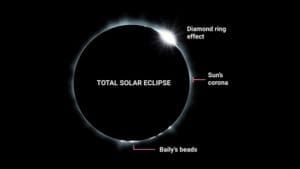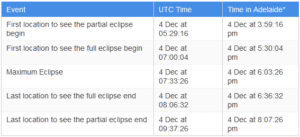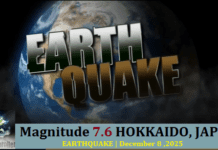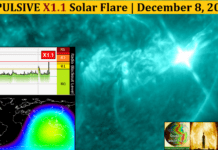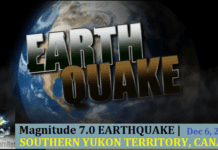A Total solar eclipse will take place December 4th, 2021 when the New Moon comes between the Sun and Earth and casts the darkest part of its shadow, the umbra on Earth. You’ll have to travel a long way to Antarctica to see the total phase of this Total Solar Eclipse. Parts of southern Africa, including locations in South Africa and Namibia, will see a Partial Solar Eclipse, if the weather permits.
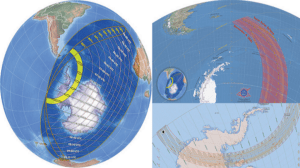
Complete Solar Eclipse Has Five Phases
There are five stages in a total solar eclipse:
- Partial eclipse begins (1st contact): The Moon becomes visible over the Sun’s disk. It looks like the Moon has taken a bite out of the Sun.
- Total eclipse begins (2nd contact): The Moon covers the entire disk of the Sun. Observers in the Moon’s umbralpath may be able to see the diamond ring effect and Baily’s beads just before totality.
- Totality and maximum eclipse: The Moon completely covers the disk of the Sun. Only the Sun’s corona is visible. This is the most dramatic stage of a total solar eclipse. At this time, the sky goes dark, temperatures can fall, and birds and animals often go quiet. The midpoint of time of totality is known as the maximum point of the eclipse.
- Total eclipse ends (3rd contact): The Moon starts moving away, and the Sun reappears. Those fortunate enough to be in the Moon’s umbral can see Baily’s beads and the diamond ring effect just after totality ends.
- Partial eclipse ends (4th contact): The eclipse ends as the Moon leaves the Sun’s disk.


Total Solar Eclipse and Earthquake Symmetry information available through website purchase of the December solarwatcher Newsletter
Link Below:
http://solarwatcher.net/index.php?option=com_mediashop&view=simpleitem&Itemid=184
